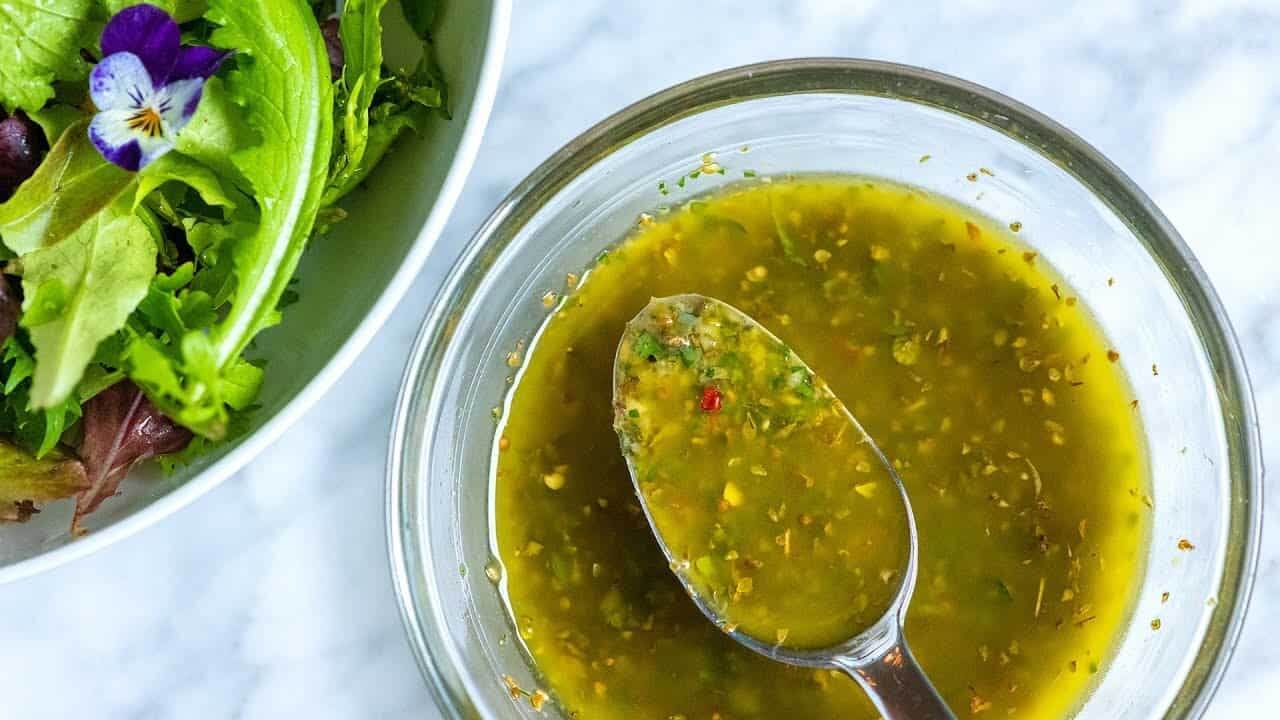
When it comes to choosing a tasty and nutritious dressing for your salad, Wishbone Italian Dressing is a popular choice. Packed with flavor and made with quality ingredients, this dressing adds a delightful zing to any dish. But besides being delicious, it’s important to be aware of its nutritional value. In this article, we’ll delve into the nutrition facts of Wishbone Italian Dressing, giving you a clear understanding of what you’re consuming. From calorie count to fat content, sodium levels to vitamin and mineral content, we’ll cover it all. So, if you’re curious about the nutritional benefits of this classic dressing, keep reading to discover everything you need to know!
Key Takeaways:
- Wishbone Italian Dressing is a healthy choice with low calories, heart-healthy oils, and essential nutrients. It’s also gluten-free and adds delicious flavor to your meals, perfect for salads, marinades, and more!
- With no added sugar, cholesterol, and artificial preservatives, Wishbone Italian Dressing is a versatile and convenient option. It’s suitable for vegetarians, enhances nutrient absorption, and is easily available in stores or online.
Low in Calories
The 18 Wishbone Italian Dressing only contains 70 calories per serving, making it a great choice for those watching their calorie intake.
Heart-Healthy
This delicious dressing is made with heart-healthy oils, such as soybean and olive oil, which are known to promote good cardiovascular health.
Rich in Vitamin E
Wishbone Italian Dressing is a good source of vitamin E, an essential nutrient that acts as a powerful antioxidant in the body, protecting cells from damage.
Contains Essential Fatty Acids
The Italian Dressing contains essential fatty acids like omega-3 and omega-6, which are important for maintaining healthy skin and supporting brain function.
No Cholesterol
With zero cholesterol, this dressing is a heart-healthy choice that won’t negatively impact your cholesterol levels.
Low in Sodium
The Wishbone Italian Dressing is low in sodium, making it suitable for those following a low-sodium diet or concerned about their blood pressure.
No Added Sugar
This dressing is free from any added sugars, making it a diabetic-friendly option or a great choice for anyone looking to reduce their sugar intake.
Gluten-Free
The 18 Wishbone Italian Dressing is gluten-free, making it suitable for individuals with gluten sensitivities or those following a gluten-free diet.
No Artificial Preservatives
The dressing is made without the use of artificial preservatives, ensuring a more natural and fresh flavor.
Contains Beneficial Herbs and Spices
Infused with a blend of flavorful herbs and spices, this Italian dressing adds a zesty kick to any salad or dish you prepare.
Suitable for Vegetarians
Vegetarians can enjoy this dressing, as it does not contain any animal products or by-products.
Versatile Use
The 18 Wishbone Italian Dressing is not limited to salads; it can also be used as a marinade for meats or as a topping for sandwiches and wraps.
Adds Variety to Your Meals
With its tangy and savory flavor, this dressing helps to add variety to your meals and elevate the taste of your favorite dishes.
Convenient and Ready to Use
With an easy-to-use bottle, you can simply pour this dressing onto your meals, saving you time and effort in the kitchen.
Suitable for Keto and Atkins Diets
This dressing is low in carbohydrates, making it a suitable choice for those following keto or Atkins diets.
Enhances Nutrient Absorption
The healthy fats in Wishbone Italian Dressing can help increase the absorption of fat-soluble vitamins present in your meals, such as vitamin A, D, E, and K.
Bursting with Flavor
The 18 Wishbone Italian Dressing is known for its rich, robust flavor that enhances the taste of any dish it’s added to.
Easily Available
You can find this Italian dressing in most grocery stores or online retailers, ensuring easy access to this flavorful and nutritious addition to your meals.
Overall, the 18 Wishbone Italian Dressing offers a range of nutritional benefits, including low calories, heart-healthy oils, vitamin E, and essential fatty acids. It is also gluten-free, suitable for vegetarians, and adds a burst of flavor to your favorite dishes. Whether you’re dressing a salad, marinating meat, or adding a zesty touch to your wraps, this dressing provides a convenient and tasty solution. Try the 18 Wishbone Italian Dressing today and elevate your meals with its delicious and nutritious flavor!
Conclusion
In conclusion, Wishbone Italian Dressing is a popular choice for many who are looking to add flavor to their salads and other dishes. While it is a delicious condiment, it is important to be aware of its nutrition facts. With only 35 calories per serving, it is a low-calorie option that can be enjoyed guilt-free. However, it is high in sodium with 380mg per serving, so individuals with high blood pressure should consume it in moderation. Additionally, it contains soybean oil and may not be suitable for those with soy allergies. Overall, Wishbone Italian Dressing can be a flavorful addition to your meals, but it’s always important to be conscious of its nutritional content.
FAQs
1. What are the nutrition facts of Wishbone Italian Dressing per serving?
Each serving of Wishbone Italian Dressing contains approximately 35 calories. It is a low-calorie option for those watching their intake.
2. Is Wishbone Italian Dressing high in sodium?
Yes, Wishbone Italian Dressing is relatively high in sodium. It contains approximately 380mg of sodium per serving. It is recommended to consume it in moderation, especially for individuals with high blood pressure.
3. Does Wishbone Italian Dressing contain any allergens?
Yes, Wishbone Italian Dressing contains soybean oil. Individuals with soy allergies should avoid consuming this dressing or check the label for any potential allergen warnings.
4. Can I use Wishbone Italian Dressing for cooking purposes?
Yes, Wishbone Italian Dressing can be used as a marinade or dressing to add flavor to various dishes. It can be a versatile ingredient in your cooking repertoire.
5. Is Wishbone Italian Dressing suitable for vegetarians or vegans?
Yes, Wishbone Italian Dressing is suitable for both vegetarians and vegans as it does not contain any animal-derived ingredients.
Was this page helpful?
Our commitment to delivering trustworthy and engaging content is at the heart of what we do. Each fact on our site is contributed by real users like you, bringing a wealth of diverse insights and information. To ensure the highest standards of accuracy and reliability, our dedicated editors meticulously review each submission. This process guarantees that the facts we share are not only fascinating but also credible. Trust in our commitment to quality and authenticity as you explore and learn with us.


